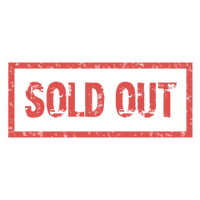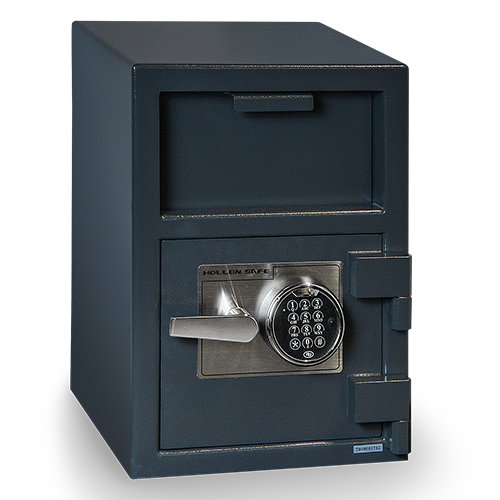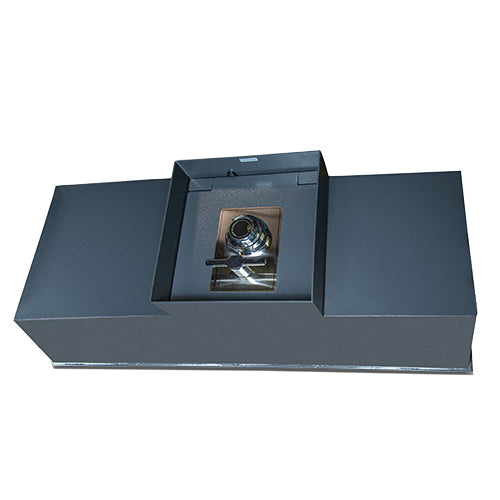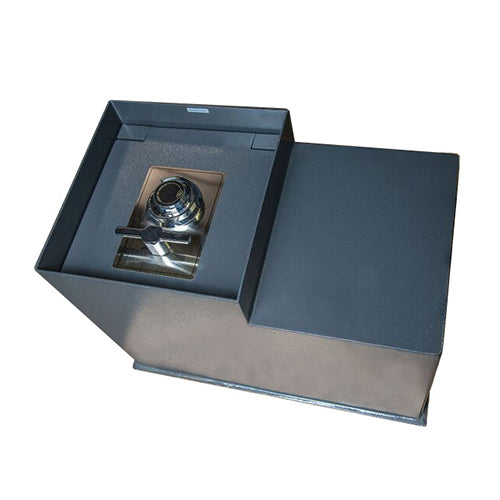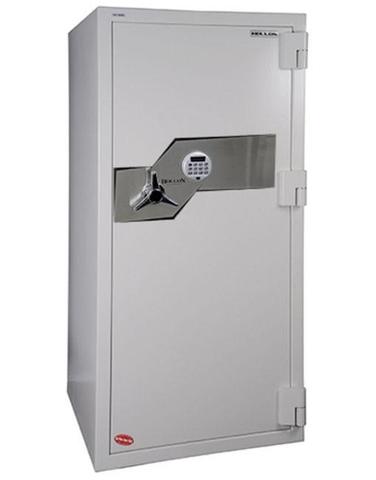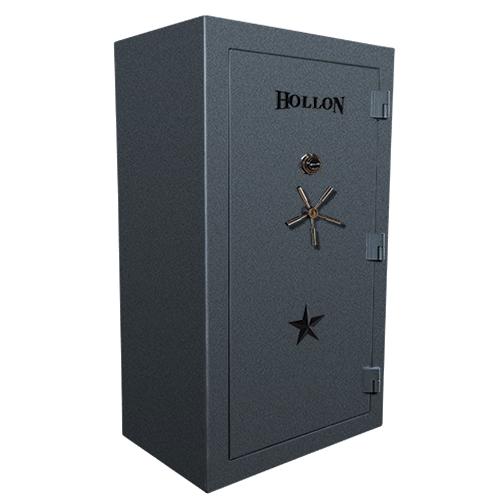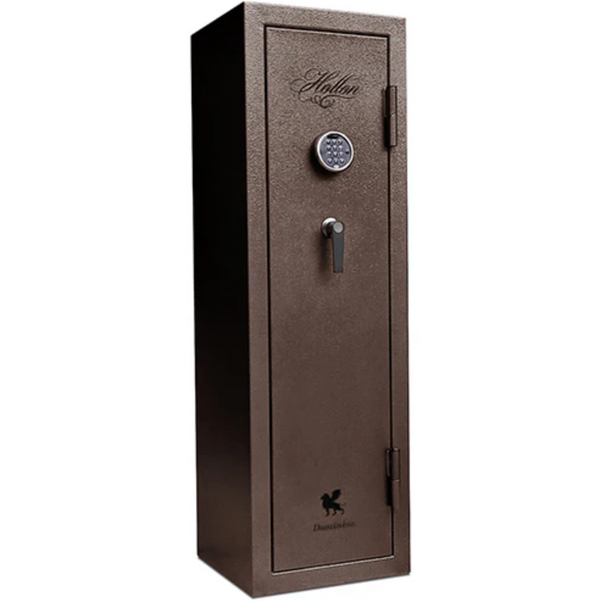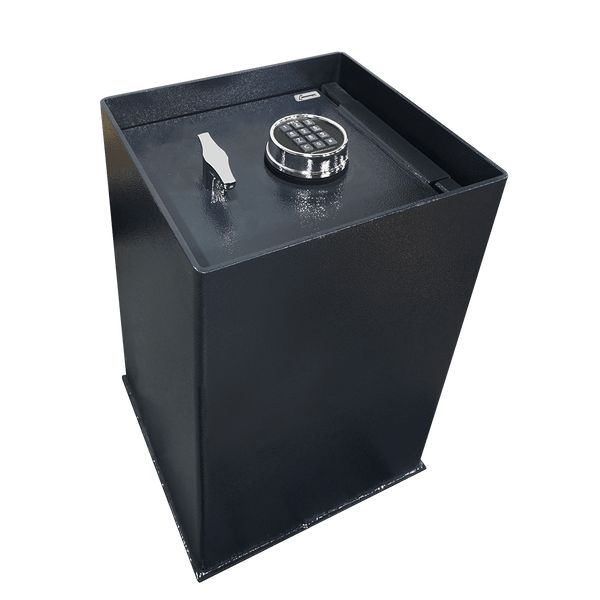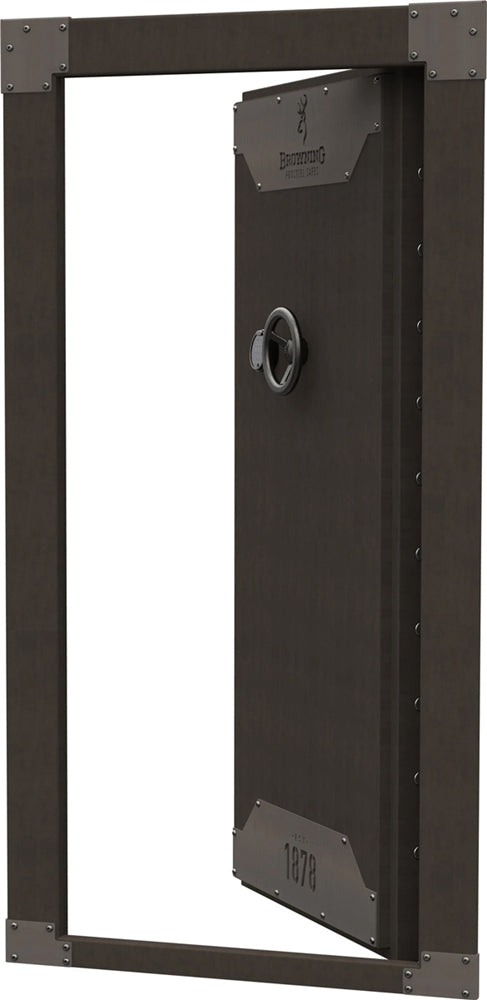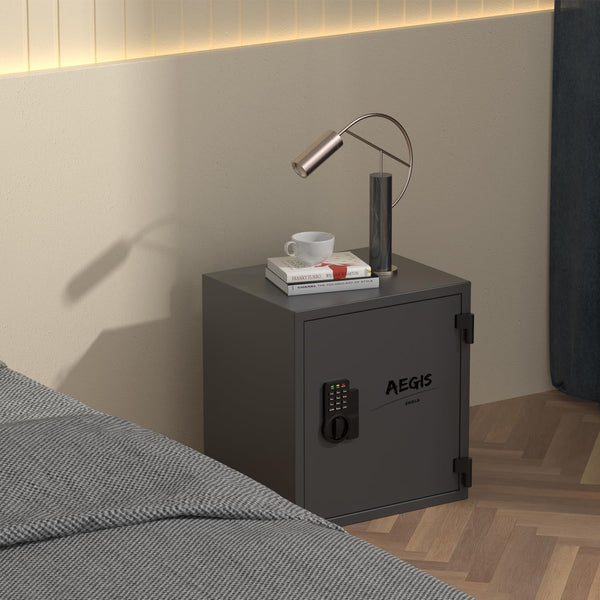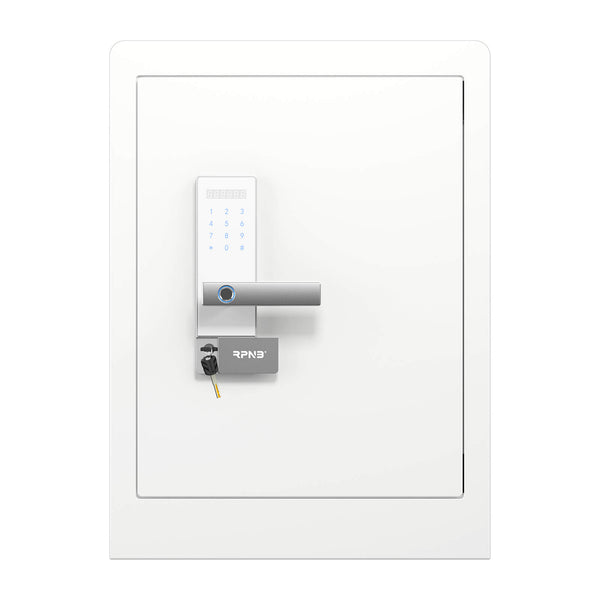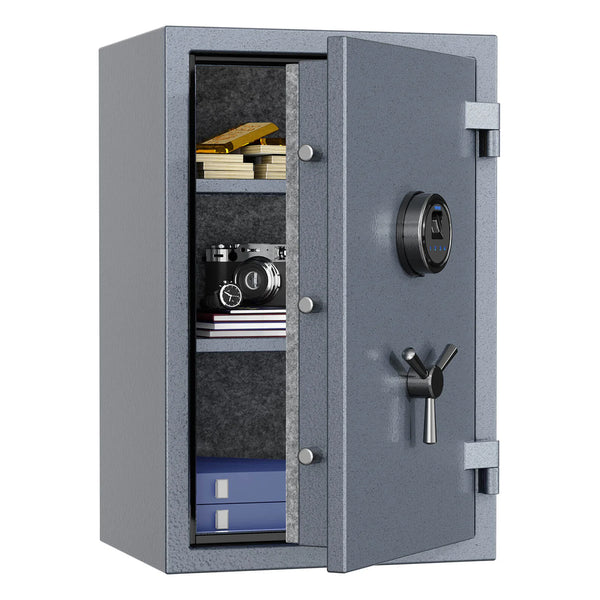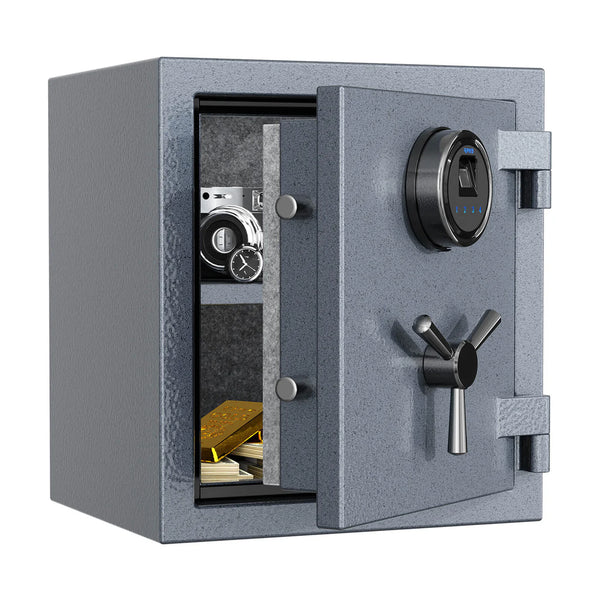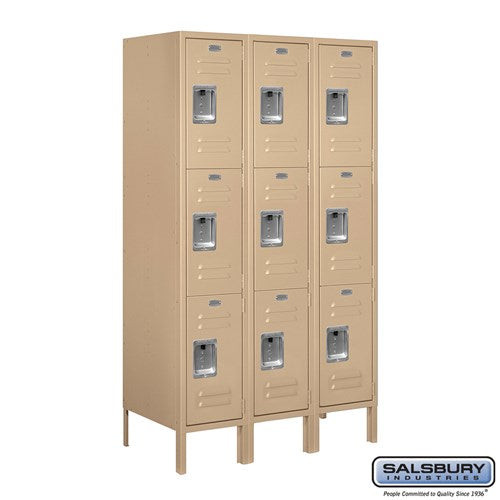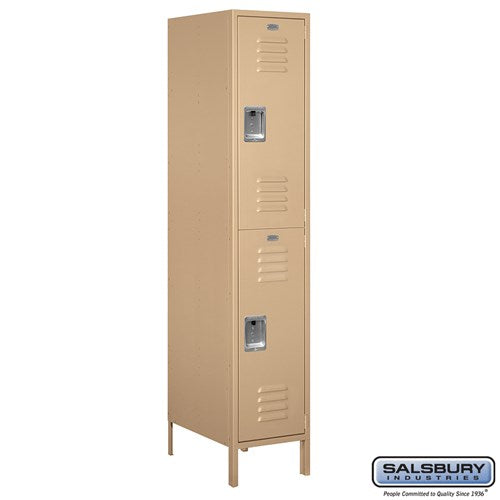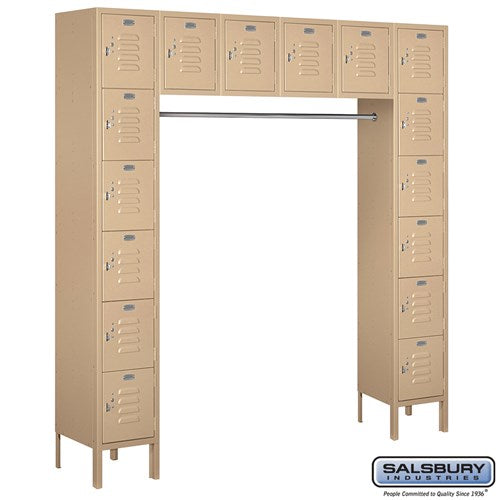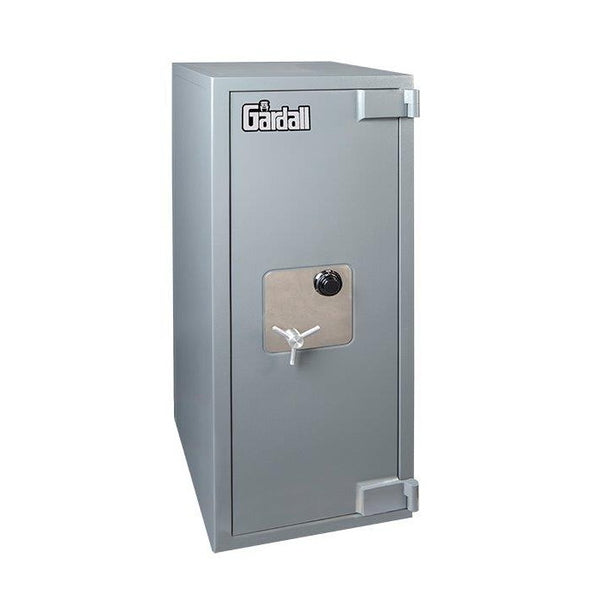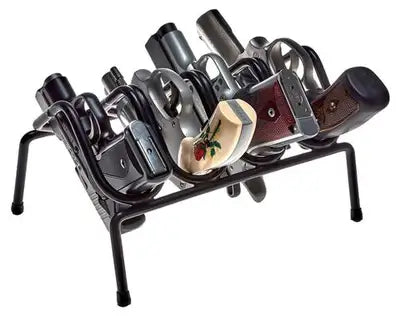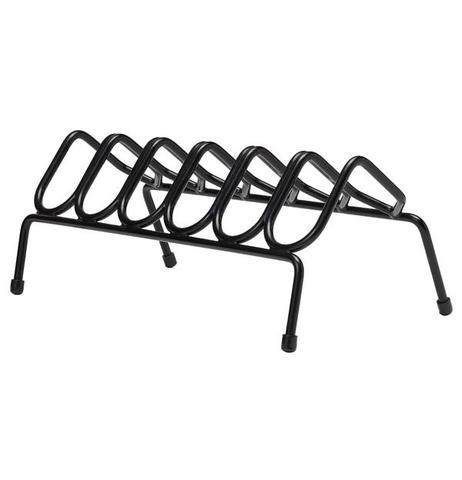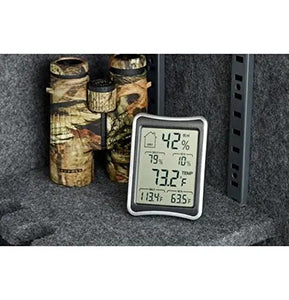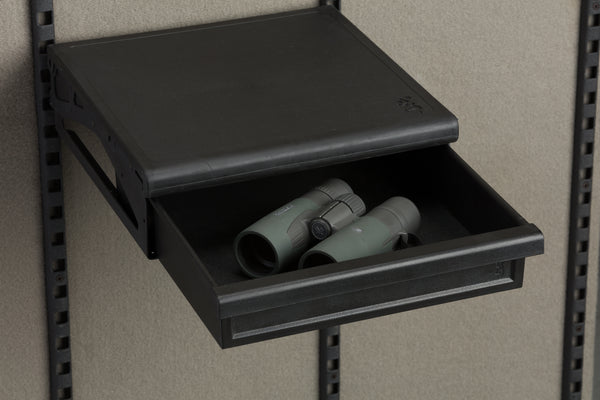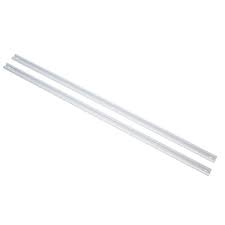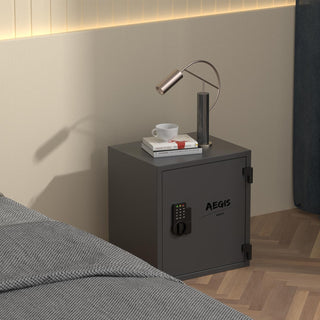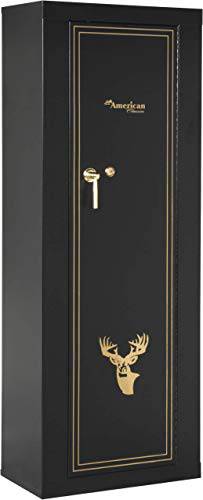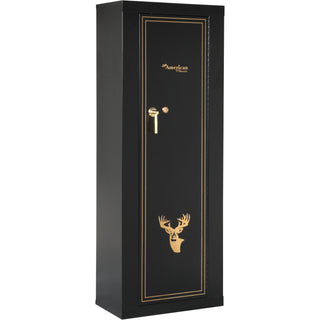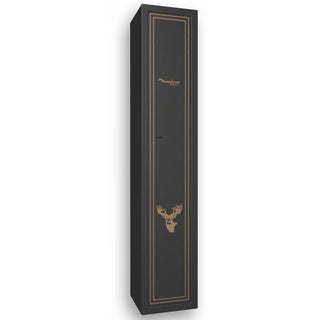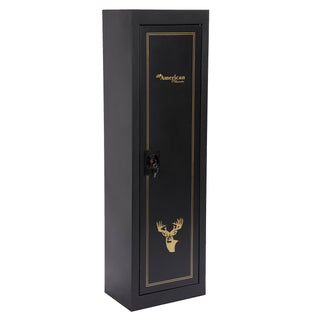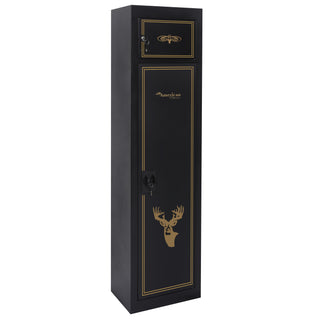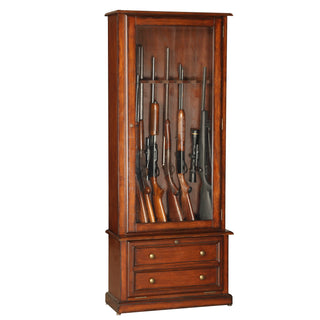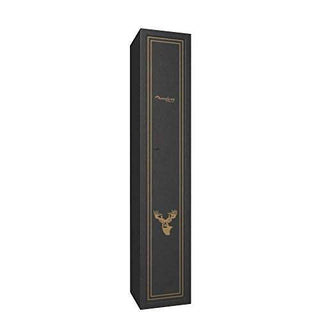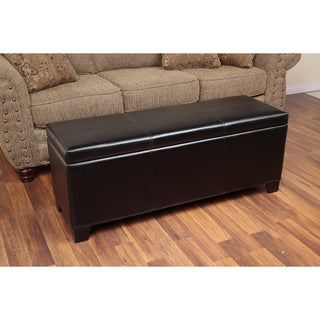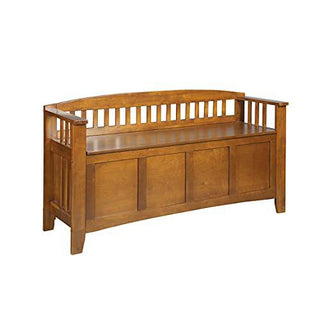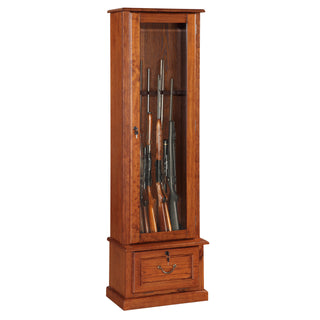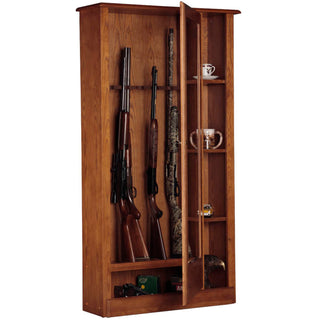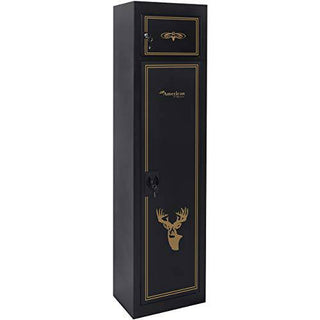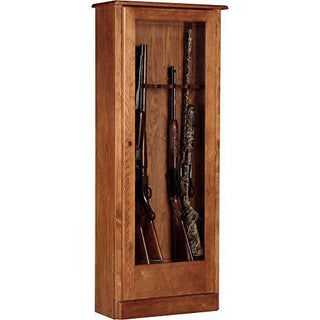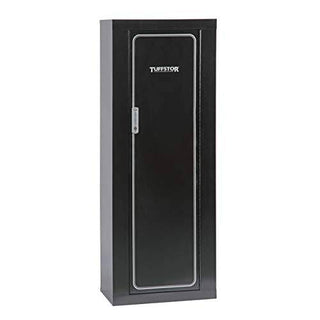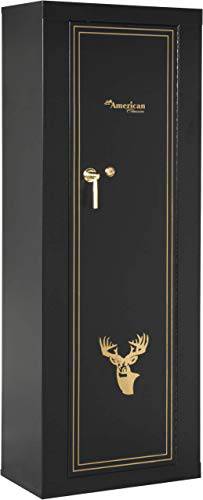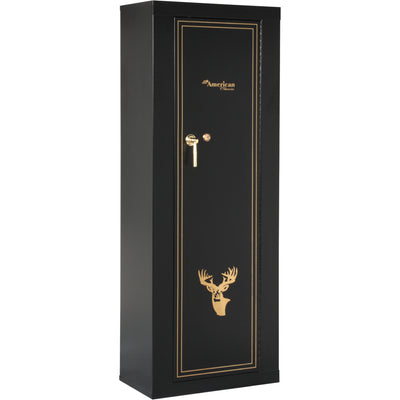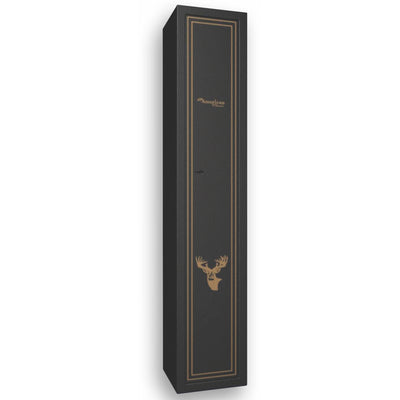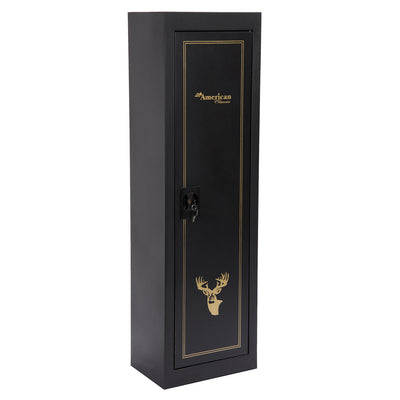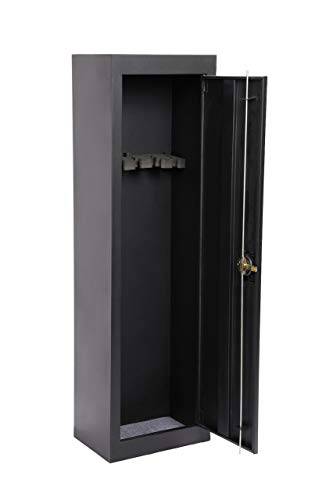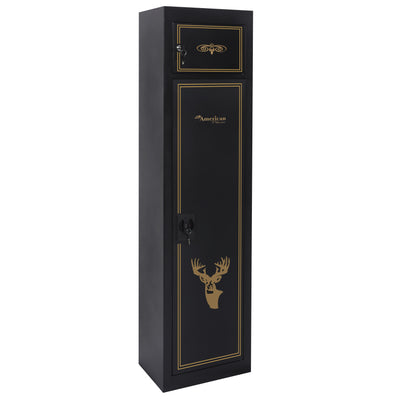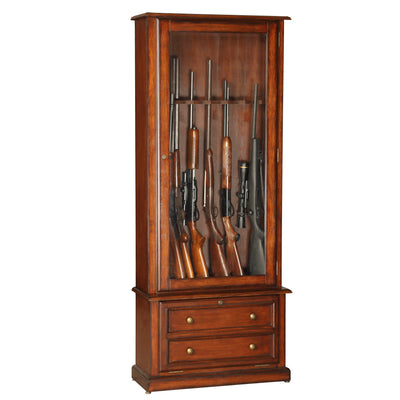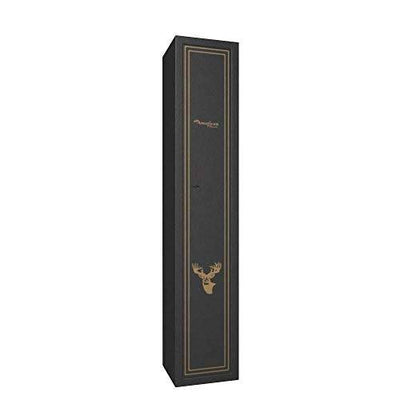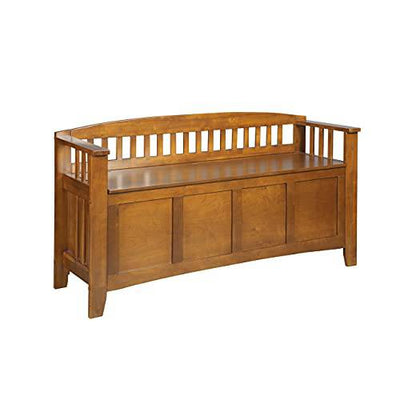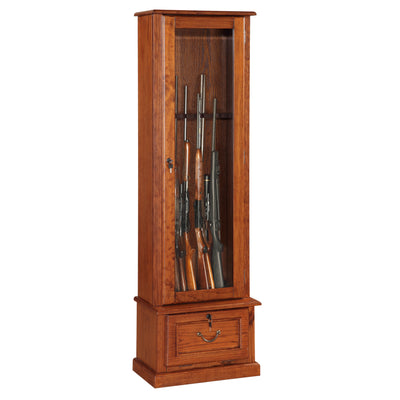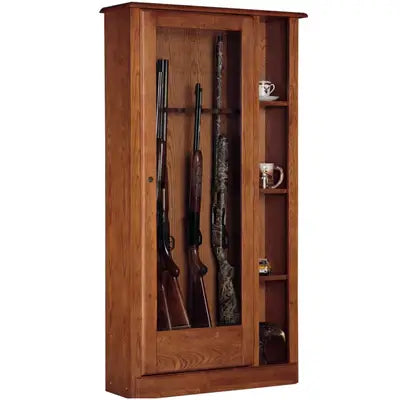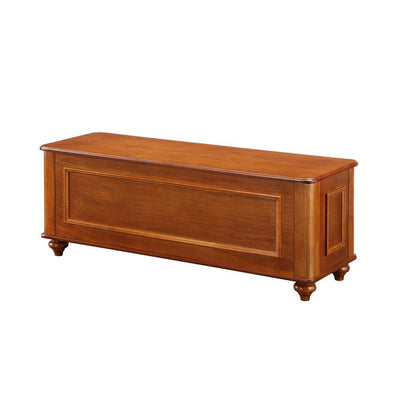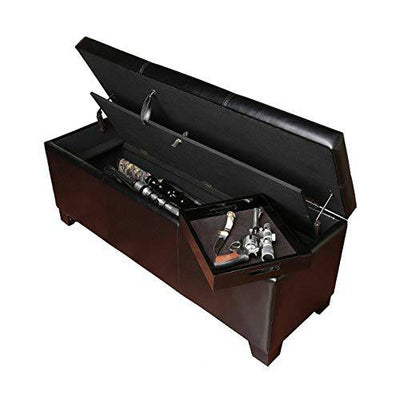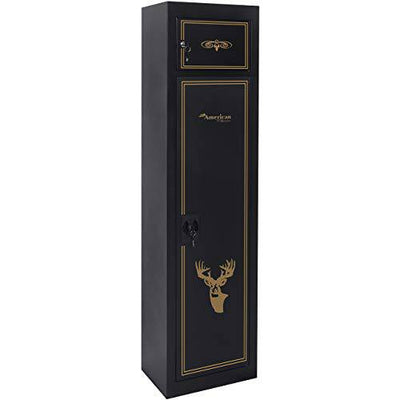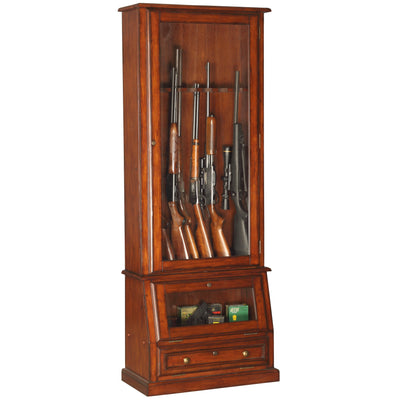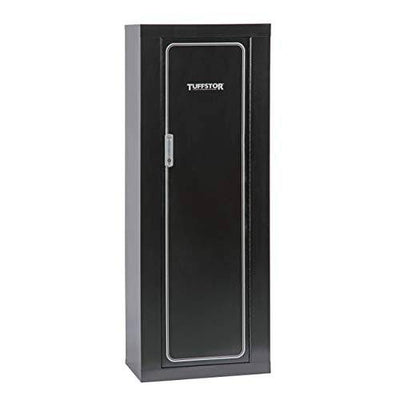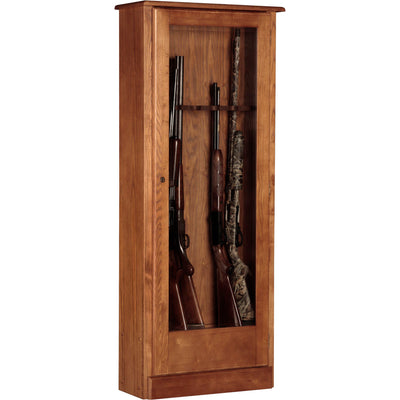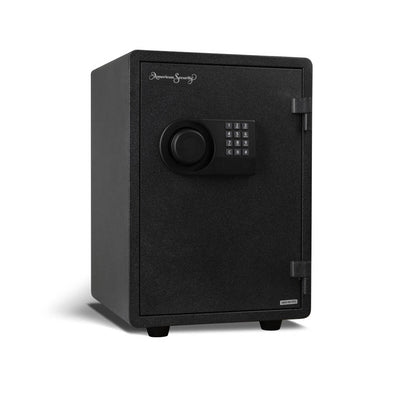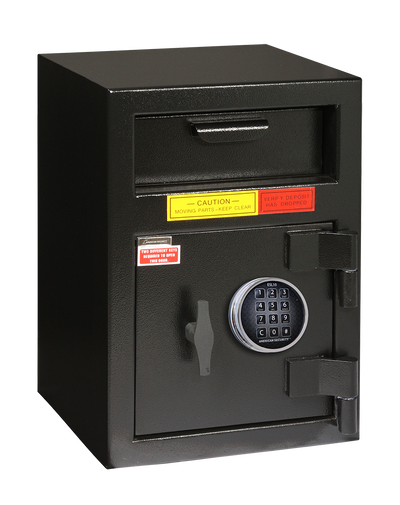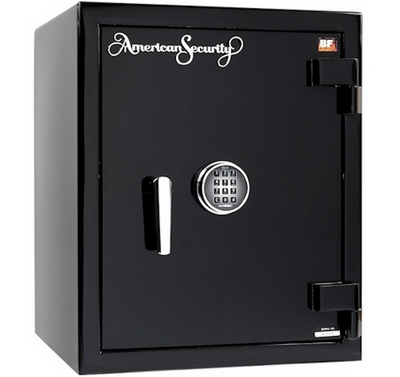Gun Safe Buying Guide | Check to See if You Know Your Facts

Do you own firearms?
Then you need a gun safe in your office or home. Some states, like California, can even prosecute you if your guns are stolen and you don't have a safe. But buying a safe is not like buying a carton of milk. It's a serious decision. Unfortunately, it's not an easy decision, either. There are countless safe manufacturers and vault designs. Which is the right one for you?
Say hello to our Gun Safe Buying Guide. It has everything you need to pick the right gun safe. When we say "right", we mean that the guide will point you towards a safe that's suitable to your guns, personal needs and budget.
Remember--buying the wrong safe can give you a false sense of security. Our customers often tell us that they regret some of the past purchases that cost them dearly. Don't make the same mistakes.
We highlight the most important qualities you must identify in the best gun safes. Our expert advice will also guide you through the toughest decisions like:
- Is an electronic lock or a dial lock the best for me?
- Which fire-proof design is the most effective?
- I have long-barreled scoped rifles. What interior is the best for them?
- I know I need a safe - but what size?
- How do I install my new gun safe?
How do I keep my firearms rust-free?
For your convenience, we also review some of the best gun and rifle safes on the market. You can look forward to innovative designs from different brands.
How To Use This Guide
You can use this guide in two ways. You can read through the guide from start to finish or select a topic from the table of contents that interests you. Simply click on your chosen topic and the guide will take you to that section.
As a bonus, there are links in our guide to additional details you might find helpful. You can also download your full guide here for easy reference and reading offline.
Table Of Contents
Terminology
Gun safe - A gun safe is a metal, storage container for a single firearm or a collection of guns and accessories. Its main purpose is to prevent theft and unauthorized access. A quality gun safe can also protect your collection from water, fire, and natural disasters.
Gun cabinet - Whereas most gun safes are sturdy metal containers, a gun cabinet often displays a gun owner’s collection in some way. Gun cabinets also secure firearms against unauthorized handling. While they are adequate to keep burglars out, they are not suitable for protection against fires.
Gun vault - Most gun vaults are safes with a permanent location. It can be built into a wall, a car, or even be a hidden room. Vault doors to a protected room are the best, high-capacity storage for guns - almost like your own personal armory! But it is also the most expensive option for keeping guns secured.
Lockbox - A smaller mobile safe with a combination lock (it can be an electronic lock or mechanical locking mechanism). These are best for small, portable handguns. While they are cheap, they offer little protection for guns in our opinion.
Why Buy A Gun Safe?
-
A gun safe deters burglars.
-
A gun safe prevents children from gaining access to firearms.
-
A gun safe can keep you on the right side of the law.
-
A gun safe can provide you with insurance benefits.
-
A gun safe protects firearms from flood damage.
-
A fire-resistant safe with a good fire rating can protect valuables during house fires.
-
It can be a one-stop storage unit for guns and accessories.
-
If the gun safe is installed permanently in your home, it's an investment that can raise the value of your house when you sell your house.
Do's And Don'ts Of Gun Safe Buying
DO Purchase A Gun Safe That Is Bigger Than You Think You Need.
Chances are that your gun collection will grow over time. A good safe is more than just a gun locker. It's also a secure storage device for your family's other valuables. For this reason, even a large safe can fill up quickly. The lack of capacity is the number one complaint of gun safe owners. So it's always worth getting the largest safe you can afford.
Do Spend The Money That Is Necessary.
Spend the money for the size, protection, and features that you really want. Your collection may be worth tens of thousands of dollars. Some people who visit this site wouldn't hesitate to spend $1,100 for a custom action or $1,400 for a NightForce scope, yet they don't want to spend more than a few hundred dollars on a safe. That's not common sense. A rule of thumb is to spend at least 10 percent of the value of the contents of a safe on the safe itself.
Pro Tip: If you're on a tight budget, consider buying a scratch-and-dent safe. Unlike many other products, safes don't really wear out over time. Here's one way to get a great bargain. When businesses change locations, you can get a high-quality commercial safe for little more than the cost of removing it.
DO Spend More For A Safe That Offers Fire Protection.
Do your homework on this one. Regrettably, too many gun owners spend a lot of money on "fire-proofing" that is not effective. You don't want to lose your rifle collection or other valuables to dubious fire ratings and materials. When sheet-rock is used, you must always check that it was properly installed. Never neglect to check the details of who certifies the fire ratings (we will cover that shortly).
Pro Tip: If you have valuable documents and media files, it's not a bad idea to purchase a smaller, commercial-grade fire safe to put inside the gun safe. This gives you double protection.
DO Look At Different Brands Before You Buy.
Not all brands are created equal or offer the same things to everyone. Indeed, there ARE significant differences among brands. Here are just a few examples if you are looking for something specific.
-
Browning offers a unique (patent-pending) door-mounted rifle rack.
-
Amsec offers a proprietary "DryLight" poured concrete-type fire insulation with greater structural strength than your typical sheet-rock panels.
-
Rhino safes provide an unmatched rugged, industrial look.
-
Pendleton Safes have a unique, patented carousel that makes access to guns a lot easier.
-
Zanotti offers slide-out drawers and a modular design that is much easier for an owner to move.
-
Ft. Knox uses an advanced method to secure and stabilize its fire-proofing layers within the safe.
-
Brown Safes offers custom exotic wood interior shelving and commercial-grade burglary protection (the brand uses thicker steel with heavy composite doors and walls).
DO Scrutinize The Specifications Of The Gun Safe.
Being big and heavy does not mean that a gun safe is automatically secure. You must determine the resistance capability of the safe's plate steel. Heavy-gauge steel is much more resistant to cutting and drilling than light 12-gauge or 14-gauge steel. Sadly, there are safes on the market with such thin plate steel walls that a fire ax can penetrate them. While 11-gauge steel can be sufficient in some cases, we recommend 10-gauge steel at a minimum, and 8 gauge is much better.
Pro Tip: While it's prudent to choose 10-gauge steel or stronger, the safe must also carry a UL RSC (Underwriters Laboratories "Residential Security Container") or better rating.
DO Ask About The Safe's Safeguards Against Tampering.
A quality safe will feature extra armor or devices to defeat a drilling attack. Low-grade safes can be opened in a few minutes with simple, battery-powered hand tools. Your new gun safe should preferably have relockers to ensure that it remains locked during a burglary.
Relockers are hardened pins that are triggered during an attack. They cannot be retracted without hours of drilling. The number of relockers on a safe can range from 2 to 10 (or more) depending on the size of the gun safe and its burglary grade. A quality safe will also have a locking mechanism that is not easy to tamper with.
DON'T Store Powder In Your Safe.
A tightly-sealed metal box with a large quantity of powder inside is a bomb. Store your ammo in a separate, lightly-constructed cabinet or wooden box. The main thing for powder is to keep it dry and away from moisture and light.
DON'T Store Large Quantities Of Primers In Your Safe.
If a primer goes off it can detonate others, causing a chain reaction. If you have thousands of primers, don't store them all in one corner of your gun safe. Look for alternative storage options.
DON'T Leave Your Safe On Its Shipping Pallet.
Relying on the safe's mass alone to deter thieves is not a good idea. A 10-year-old kid with a rented pallet jack can move a 1000-pound safe with ease if the pallet is still attached and the safe is not bolted down.
DON'T Keep Your Safe In Plain View.
Discretion is always a good idea, even though you might love to show off your safe. Bad spots include the front of your garage and the corner of your living room. This is an open invitation to thieves.
Also, practice discretion when you load and unload firearms. It's never a good idea to advertise to the whole neighborhood that you have a large gun or rifle collection. Regrettably, old school values of respecting your neighbor's stuff come second these days to sticky fingers.
DON'T leave power tools or cutting torches near your safe. (This is often the case when owners install safes in a workshop or a garage where they also store their tools.) You are inviting a would-be burglar to use them on your safe.
Pro tip: If you have power tools or torches that must be in the same room as your safe, one can make the investment of getting your tools their own secure locker. This will deter a burglar from using and probably stealing them too.
Factors To Consider Before You Buy
Impulse buying is out. The process of buying a gun or rifle safe is one that relies on several factors. The truth is that buying a safe is all about the right tradeoffs. If you want the best safe, it will probably be too expensive for most of us. Make the best selection and know what you are getting. Stick to this rule and you'll wind up with a safe that you are satisfied with for a long time.
Here are the most important things to take to keep in mind when you are looking to buy a safe.
- Consider the basics like portability, size, weight, and location.
- Construction is also important. Consider the metal thickness (gauge) and body welds.
- Check security features like fire protection, type of locking bolts, and safe locks.
- Assess the quality of the safe door hinges and seals.
- You also know which special features you are looking for and these might include internal lighting, dehumidifying devices, shelves, and racks.
Ratings And Tests
Are Gun Safes Fireproof Or Fire-Resistant?
Yes, some safes are fireproof. Others are fire-resistant. What is the difference? A fireproof gun safe is usually a heavy-duty container that can withstand the extreme temperatures of a fire for up to two hours. A fire-resistant safe will give you more basic protection against a shorter, less intense fire or a burglar with a flame cutting tool. You might want to research a brand's claims when you find a safe you like - some companies have a bad habit of switching one term for the other.
A fire-resistant safe mainly uses two different types of fire-proofing insulation - sheet-rock or ceramic wool blankets. The latter insulates a gun safe better. But sheet-rock, when sandwiched between steel plates, is also very effective at warding off the heat and sealing the safe during a fire. Just a word of advice: the top of sheet-rock slabs can crumble during or after fire exposure. This leads to hot spots at the top of the gun safe.
Sheetrock, which is made of gypsum, absorbs moisture. In the event of higher temperatures created by a fire, the gypsum in sheetrock releases its moisture which raises the humidity of the safe that can damage its contents. Gypsum that absorbs and releases moisture loses its structure and ultimately fails at fireproofing.
If you want a gun safe with sheet-rock, consider a worthwhile brand. Ft. Knox employs an extra assembly stage to secure the sheetrock within the safe walls. Ft. Knox bar-tacks the sheet-rock panels in a matrix so the insulating material stays in place.
UL Ratings For Fire Protection, RSC Ratings, And ETL Ratings
This section covers the all-important burglar/fire safes ratings. The most important thing is this - if you see a safe that has only been tested by its manufacturer, remember that it's better to look for a safe that is independently UL-tested. They check that safes are created to protect valuables and guns from dangers like theft and fires. A UL-rated fire safe or fire lock box can prevent untold losses during a house or business fire (think valuable records or long gun collection, etc).
"UL" stands for Underwriters Laboratories. After testing a safe, they give it a fire rating of Class 350-1, 2 or 3. Class 350-1 means that the safe's interior doesn't get hotter than 350°F when exposed for 1 hour to a 1700°F fire. Want more fire protection than just 1 hour? Class 350-2 and 3 could be better for your safety needs. These classifications indicate the time period of protection that you can expect - two hours at 1850°F, or 3 hours for 1920°F.
Use caution when you see UL labels on fire liners and also with RSC (Residential Security Container) gun cabinets or safes. According to some experts in the industry, such a container is not a true gun or rifle safe and can be easily broken into using basic tools. At the very least, an RSC safe should have underwriter laboratory burglar ratings such as "TL-15" or "TL-30."
- TL-15 - The safe door can successfully resist entry for a net assault time of 15 minutes when attacked with common hand tools, picking tools, mechanical or portable electric tools, grinders, drills or pressure devices.
- TL-30 means the safe door can pass the same test for 30 minutes.
- A UL-listed fire liner also does not mean that the safe itself is a UL-rated safe.
"ETL'' stands for ETL Testing Laboratories. Intertek ETL is an industry leader in testing the quality of a gun safe. Their fire rating labels indicate which safes offer fire protection for guns for 45, 90, and 120 minutes.
Humidity Control
Ideal Humidity And High Humidity (Plus Its Problems)
The ideal relative humidity (RH) level inside a gun safe should be 50 percent. It's okay near the 40 or 60 percent mark but it should never go over or under. That's when things go wrong for guns. Some of the biggest issues are rust and corrosion. Another serious issue caused by high humidity is mold growth inside the gun safe.
There are two basic approaches to controlling relative humidity: (1) warming the interior of the safe which lowers the relative humidity, and (2) using a chemical (called a desiccant) that removes moisture from the air through a process called adsorption (not "absorption").
Your Best Dehumidifier Options
-
Your battle against humidity starts with your safe's construction. It should have decent door sealing, preferably something like Palusol. Palusol provides a tight seal. Because it expands when heated, it blocks fire, smoke, heat, and water from fire hoses used to put out a fire.
-
One can use an electric warming unit to keep the air inside the safe at a constant temperature.
-
Adding a desiccant product (like silica gel) inside your safe to absorbs the moisture in the air.
-
An anti-corrosion vapor emitter can also protect guns from humidity's effects.
Types Of Gun Safe Storage
Hidden Gun Safe (Also Known As Concealment Safes Or Disguised Safes)
This is a popular choice for those who want to keep their rifle collection out of sight. A hidden safe offers endless options for blending your stash so that nobody can find them. For example, you can hide a small gun safe behind a mirror or get a large safe that looks like a piece of furniture.
Pro Tip: A concealment safe is only effective if nobody knows about them. You might trust that buddy at work (who's also a gun enthusiast) but you don't know who he talks to and who they talk to. Never disclose the location of your safe to anyone for casual reasons.
Under The Bed Gun Safe
These safes offer quick access in crisis situations like a home invasion and you're in the bedroom. Under the bed gun safes also keep guns and other valuables well-hidden.
Wall Gun Safes
This type of safe is located in a wall and can be camouflaged as well. They are usually smaller and less sophisticated than permanent vaults. That being said, some wall safes are large and perfectly capable of holding a rifle collection and accessories.
Gun Safe With Quick Access
When there's trouble, nobody has time to go through the motions of opening a large safe in the next room. Quick access safes are usually kept in handy places like under the desk or bed. Most quick-access safes are mobile and small, often designed to hold a single handgun. They offer a good variety to choose from including a mini vault or biometric gun safes like the Verifi Smart Safe and GunVault Multi Vault. Most quick-access safe manufacturers use electronic locks or fingerprint verification to make sure you can quickly open the safe.
Car Gun Safe
A vehicle gun safe can be either mobile or permanently installed in your car. You can choose between mechanical locks, biometric safes and quick-access electronic lock options.
Vault Doors For A Gun Room
Vaults are usually more secure and complex than an ordinary safe. They can get quite large too, from freestanding to hidden rooms, these vaults are perfect for a collection of guns and accessories. Remember that a vault door is only one aspect of securing a room. Walls, ceiling, floor--all need to be fortified in some way. You don't want an intruder easily busting through the drywall of your vault secured by a vault door!
A Custom Safe vs. Off The Shelf
Buying off-the-shelf offers you the chance to get what you want quickly and usually for a lower cost than a custom safe. Seeing that there are plenty of gun and rifle safes, chances are that you'll find something that you are happy with. But a custom-made safe might be better if you need something specific that is not readily available. Fort Knox and Reeds Safes are two brands that will handcraft your safe according to the specifications you provide.
Alternative Firearm Storage
Often standard gun safes might not meet your needs to protect your guns and your loved ones.
Tactical Lockers
Tactical security lockers are military-grade lockable storage specifically made for high capacity storage of firearms. Instead of a fortified enclosure with heavy gauge steel construction, they rely on discretion and good locking. The thinking here is that security comes from discretion and that a hidden, tactical safe is better than a visible, heavy safe.
Armories
For large gun collections, if you have a budget and the need for higher security, nothing beats building a large room with lockable, display cabinets behind a solid vault door. Here we are talking about over 50 guns, valuable collectables, and tens of thousands of dollars invested in security. Not to mention the bragging rights that go with your investment! For most of us, this is a pipe dream
16-Gun Safes
These safes have the capacity to stack 16 rifles or shotguns. Some have storage shelves for accessories as well as handgun pockets. The best reason for buying high-capacity safes is that on a per-gun basis you get more for your money and you are less likely to run out of space.
39-Gun Safes
These extra-large gun safes have different storage units like shelves, racks, and door pockets. With a capacity of holding a collection of 39 firearms (including long guns, handguns, and rifles), such safes usually come with great fire protection and security features. Often used, in semi-commercial applications like gun ranges, these safes are often a great buy when used as a multi-purpose safe to store other valuables besides guns.
Gun Owner Benefits
Hunters and collectors will tell you that their collections are worth a lot. A gun safe can protect this asset during a house fire or burglary, encourage an insurance company to offer lower premiums, and make long gun storage an orderly affair (as it should be).
If you own guns for personal security and home defence reasons, handgun safes or home safes is an investment in your own safety and that of your family. Children are fascinated with guns and this often leads to an accidental discharge or fatal shooting. Gun safety measures like quality vault doors and bulletproof safe enclosures will give you peace of mind that your family is safe from unauthorized handling and that thieves cannot get their hands on your long gun or handgun collection. The best gun safes also give quick access during a situation where you must arm yourself quickly (like a home invasion).
Gun owners who carry concealed handguns also enjoy many of the benefits already mentioned. A high-end security/burglar/fire safe will make sure that house fires and criminals cannot easily access or destroy your firearm. Some floor safes or lockboxes also provide quick access when you need it.
All About Locks
Locks For Gun Safes
Gun safe locks mainly fall under two categories - a mechanical combination lock and an electronic lock. Many gun owners still prefer the reliability of rotary combination locks. While electronic locks can be effective, they also need extra maintenance such as annual battery replacements and keypad replacement after 10 years or so.
Dual Locks For A Gun Safe
Gun safes with a dual lock system have two separate locks that must be opened/closed separately before the safe can be accessed or secured. Dual locking systems can include:
- A pair of rotary dials.
- A biometric and rotary dial.
- A rotary dial and electronic digital keypad.
How To Open A Digital Combo Safe
Electronic locks work on the same principle as a mechanical rotary dial. But the secret code is easier to enter on a digital keypad than using a dial. Opening a digital safe requires that you enter your code. If the code is correct, the safe will beep or a light will turn green. Most electronic safes must be quickly opened or it will automatically lock itself again. Quality electronic locks also have keys that open the gun safe in case of battery failure or you cannot remember your code.
Pro Tip: Always choose a strong combination. Avoid birthdays, personal information or using the same number several times in a sequence.
Top 5 Gun Safe Lock Problems
-
You forgot your combination code.
-
The safe refuses to open.
-
The battery died.
-
You need to replace the lock/rekeying.
-
You’re not sure what steps to take to open the safe.
Gun Safe Brands
Made In The USA vs Imports
There are plenty of reasons to buy local. The main problem with imports is the difference in quality between China steel and US steel. On average, American gun safe steel is three times stronger than metal produced by China. The math is simple. Stronger steel = more security. When you buy a rifle safe or a gun safe that was made in the USA, keep in mind that you not only support local businesses, but you also get lower prices (no import fees) and a reduced risk of purchasing a safe that contains counterfeit parts or misleading safety labels.
Brand Listing
- Liberty.
- AMSEC.
- Barksa.
- Stack On.
- Browning.
- Cannon.
- Fort Knox.
The Buying Process
Where To Buy an Offline vs Online
When you buy a gun safe offline, one must take the time to travel and visit the store. That could be a drawback for customers who do not live near a store that holds a particular safe that they are interested in. But visiting a gun safe in person allows you to thoroughly inspect it and talk directly with a sales assistant.
Buying online allows you to look at safes in the comfort of your own home. You don't have to visit different real-world stores to compare gun safes. The drawbacks of shopping online might include delayed communication when the retailer doesn't answer phones or the chat feature guy is missing. Customers can mostly also only assess a gun safe from images and the product description.
Best Time To Buy
You don't always have to pay full price for a gun safe. If you can wait a bit, keep your eyes open for companies that no longer need their safes and sell them at a discount. You can also look for a quality second-hand safe from a private seller, visit auctions, or wait for special deals from the retailer industry, including Black Friday - which is all about giving customers fantastic deals.
Budgeting For A Safe
Why are safes generally so expensive? Quality gun safes cost a lot because their materials and the production process are costly. Other factors like labor, development, and shipping also hike the price. But are there quality low-priced safes? Yes. Examples of good low-cost safes can be found on the websites of reputable brands. Some offer entry-level safes or budget gun safes that won't break the bank. Typical discounts or low prices could roughly reach $300 and up.
Financing Options
If you want a better, more expensive safe but don't want to buy one outright, then consider your financing options. Many gun safe brands offer them and that's good news. It allows you to get a gun safe with all the perks you really want - like better fire protection, security, and more. One of the most popular options is monthly instalments (sometimes without interest) that can be paid over a period of 6 months or 12 months.
Importance Of A Good Warranty
Always look for a warranty that has the customer's interests at heart. That is a good sign that you are dealing with a reputable brand and quality gun safes. Some brands, like Cannon and Liberty, offer a lifetime guarantee.
Delivery, Moving, And Installation
Delivery Options
Gun safe companies mainly deliver curbside, in your garage, or by using a white-glove service. While the garage one pretty much explains itself, you get two very different delivery styles with the rest.
Curbside means that the delivery guys will arrive, leave your gun safe on the curb of your driveway and go. White-glove services go the extra mile; taking the safe into your home or business. They will place it at the desired location and get rid of the packaging.
Moving A Gun Safe
If you want to move a safe yourself, you are going to need heavy-duty equipment including gloves, secure straps, and a dolly cart that can handle the job. Clear the route beforehand of any obstacles to make the move quick and hassle-free. For instance, if you want to install your gun safe upstairs, you can hire a stair-climbing dolly to make the job easier.
Installing A Gun Safe
If you can move your gun safe, then so can thieves. When installing your gun safe, it's critical to bolt it down. Once a safe is secured to the floor, it's harder for burglars to tip it over or steal it outright. Before a safe can be bolted down, you must consider the type of flooring, the correct type of anchoring kit, bolt holes, drilling equipment, to name but a few. It's preferable to use an expert to install a gun safe but with the right knowledge, patience, and planning, you can do it yourself.
You can also:
- Install an alarm system for your safe.
- Install it as a "hidden" safe.
- Install a smoke alarm nearby (most burglary tools produce smoke).
Gun Safe Accessories
Gun safe customization is where things get nifty. Your gun safe is no longer a copy of a million others but a unique piece of work that serves your needs. Some features are made by gun owners dedicated to crafting their own gun safe's interior. Others can be bought and installed. Just some of the most popular gun safe accessories are shelves, LED lights, protective lining for guns, door pockets for handguns, rotary racks for rifles and long gun storage, humidity and internal temperature control devices, and mag holders.
Extra Lock Features
You can never go wrong by buying a safe with extra security.
- Anti-drill hard plates protect the lock's mechanism from attacks like punching and drilling. Liberty offers hard plates that actually destroy drill bits.
- Relocker devices are invisible mechanisms that activate when someone interferes with a lock. Once a relocker is triggered, it prevents or permanently jams the lock so that it cannot open.
- Anti-pry fabrication of the safe door ensures that the fit is so precise that a would-be burglar cannot jam in a crowbar to lever open the door.
- Large stainless steel bolts across the perimeter of the safe door prevent prying open the safe should a burglar manage to jam in a crowbar.
- A safe detection device like a motion sensor, installed in a safe notifies you remotely when a safe is opened. Though it alerts you of an attempted break-in so you can get help to stop a burglary, you are hoping that intervention and prevention will secure your valuables better.
In summary, the best option for a secure safe is layering in multiple features - the more the better.
General maintenance
General maintenance of a gun safe is a multi-disciplined sport. You need to learn and perfect humidity control, cleaning both the inside and outside of the safe, maintaining locks and other operating mechanisms, seals, hinges, and locking bolts. It's also a good idea to have the safe inspected annually by an expert to see if your maintenance routine is sufficient.
Conclusion and Next Steps
Now that you have a good idea overview of all the areas you need to address if you are in that market for a gun safe, the question is what will you do next. My advice: don't fall for a price-based approach to buying, and make an informed choice instead. Buying a gun safe is often a once-in-a-lifetime purchase for most gun owners. Buy right and you'll have no regrets. Of course, we have to end with a shameless plug: give USASafeAndVault a try, and you'll see how we give you the best products, the best brands, and the best value for your purchase.








